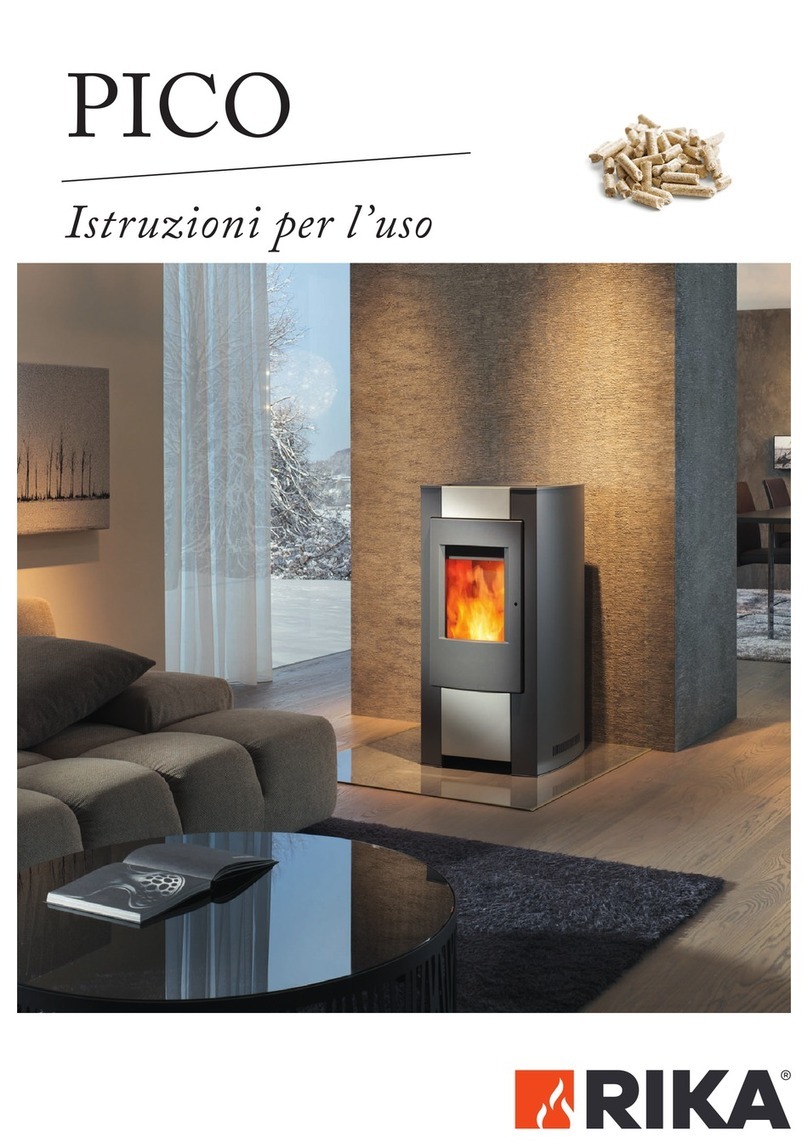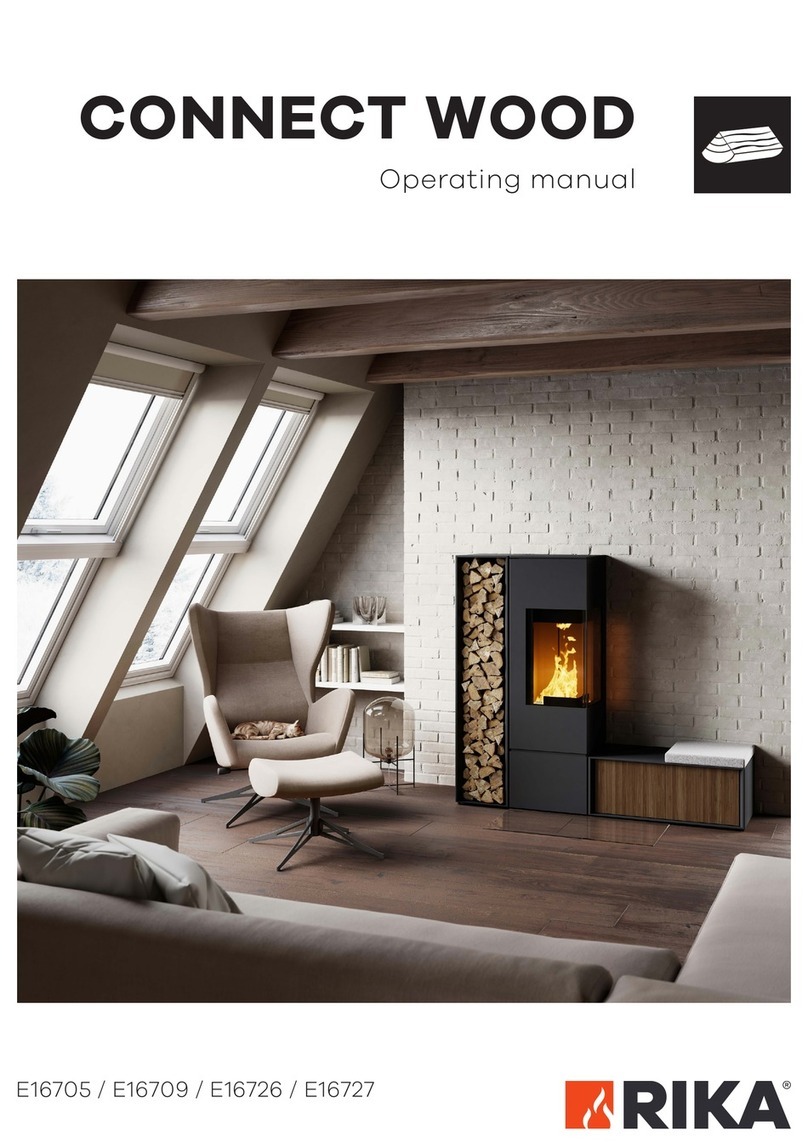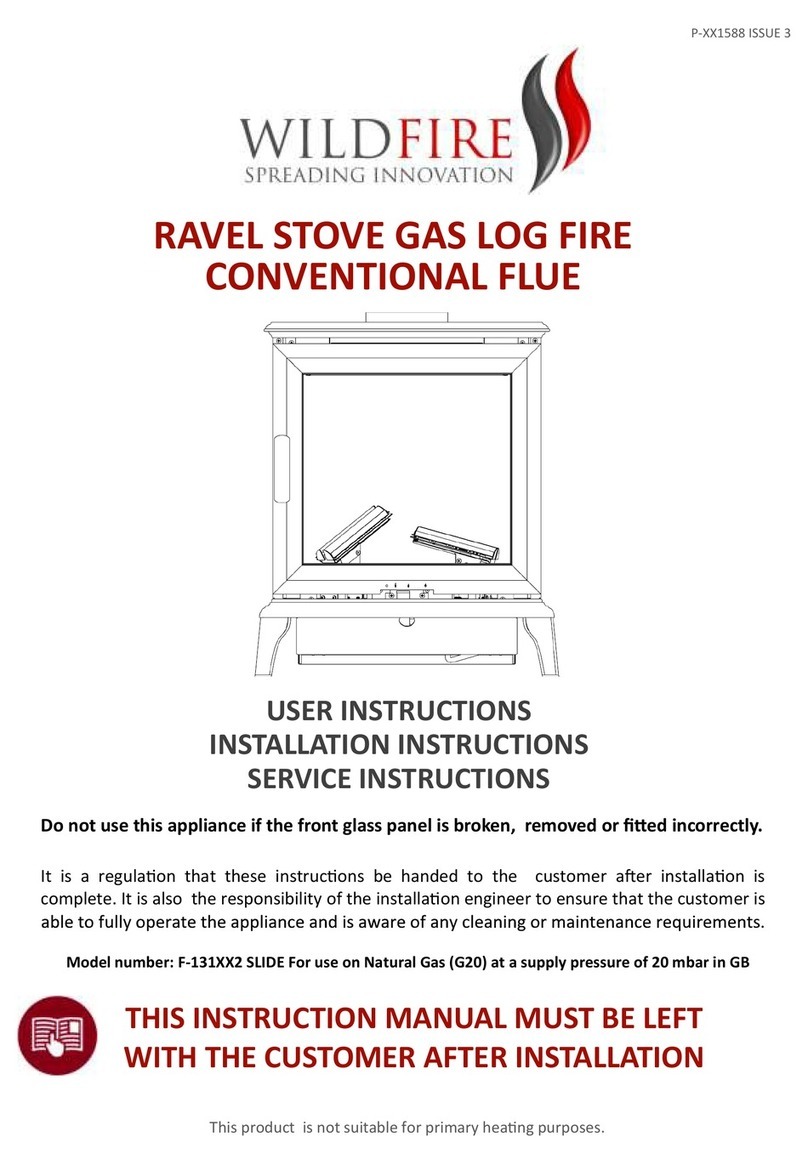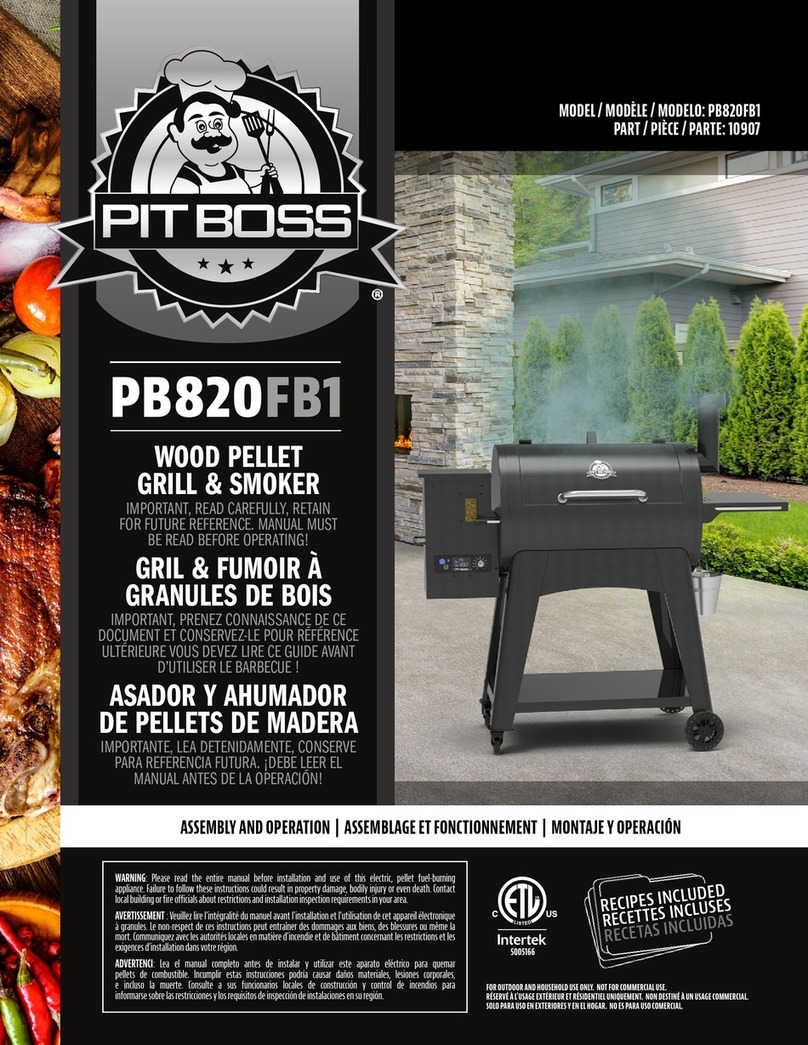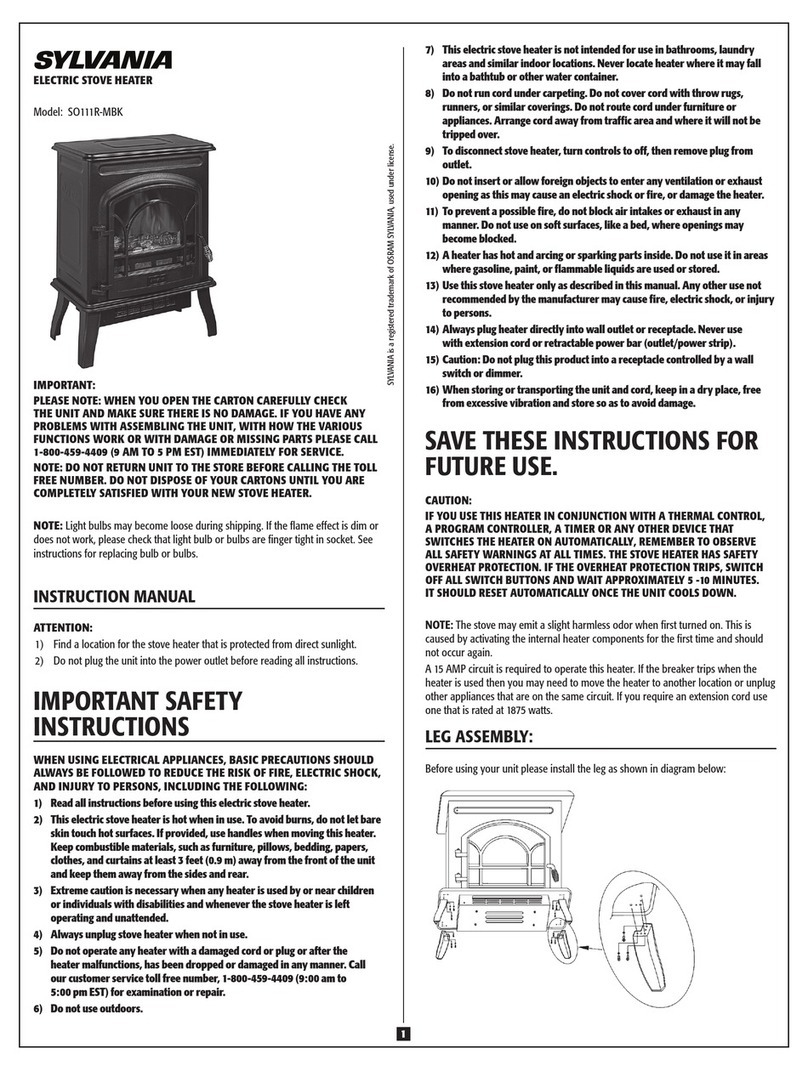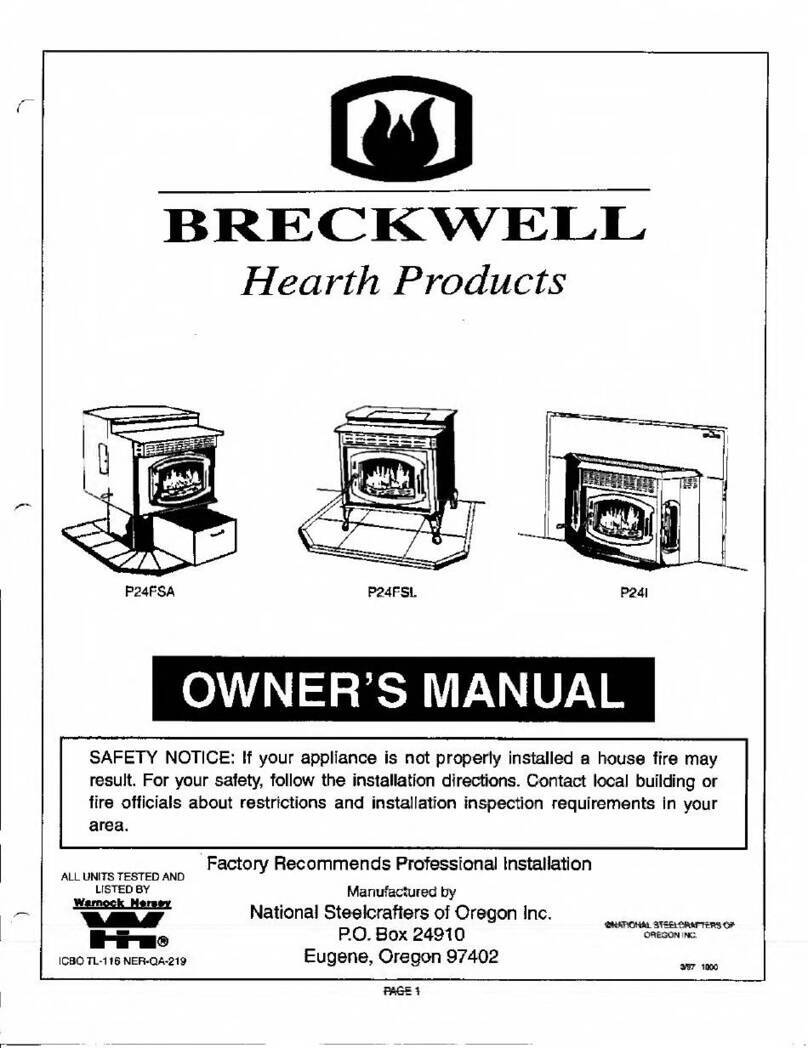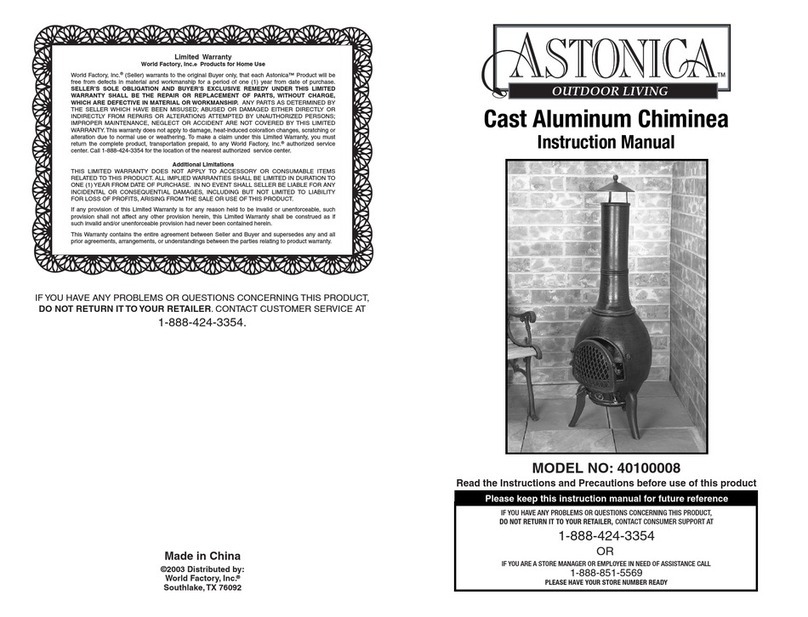
4
Dimensions
1711
1193
578 516
733
217 156
289
190
986
289
289
150
125
Dimensions manual Rikatr.
Height [mm]
Width [mm]
Corpus depth [mm]
Weight manual Rikatr.
Weight without shell [kg]
Weight with shell [kg]
Storage mass [kg]
Flue pipe connection manual Rikatr.
Flue pipe outlet [mm]
Original angle pipe connection height [mm]
Original angle pipe total depth [mm]
Original angle pipe distance to rear
wall [mm]
Deapth from rear wall to middle of flue
pipe [mm]
Original angle pipe side distance [mm]
Connection height [mm]
Connection side distance [mm]
Fresh air connection manual Rikatr.
Diameter [mm]
Connection height [mm]
Side distance [mm]
Amount of fuel
Nominal load Part load
Amount of fuel 10 kW ~, kg* ~, kg*
Amount of fuel 6 kW ~, kg* -
*Practical values may vary depending on wood quality.
Electrical connection (Rikatronic3)
The stove is supplied with an approx. 2m long connecting cable with
a Euro-plug. This cable is to be connected to a 230Volt/50Hz socket.
The average electrical power consumption is some 4 Watt in regular
operation. The connection cable must be laid in a way that there is
no contact to any sharp edges or hot surfaces of the stove.
Technical Data
Description 10 kW manual Rikatr.
Nominal heat output [kW]
Partial heat output [kW]
Room heating capacity
depending on house
coating
[m] - -
Fuel consumption [kg/h] ~, ~,
Electric supply [V]/[Hz] - /
Average electrical input [W] - ~
Fuse [A] - ,
Efficiency [%] ,
CO2[%] , ,
CO-emission on 13% O2[mg/mN
]
Dust emission [mg/mN
]
Exhaust [g/s] , ,
Exhaust temperature [°C]
Chimney draft requirement [Pa]
Description 6 kW manual Rikatr.
Nominal heat output [kW]
Partial heat output [kW] - -
Room heating capacity
depending on house coating [m] - -
Fuel consumption [kg/h] ~, ~,
Electric supply [V]/[Hz] - /
Average electrical input [W] -
Fuse [A] - ,
Efficiency [%] , ,
CO2[%] , ,
CO-emission on 13% O2[mg/mN
]
Dust emission [mg/mN
] , ,
Exhaust [g/s] , ,
Exhaust temperature [°C] , ,
Chimney draft requirement [Pa]
The owner of small firing system or the person authorised for the
small firing system is to keep the technical documentation and is to
submit it to the authorities or the chimney sweep on request.
Note
Please observe the national and European standards as well as
local regulations concerning the installation and operation of
firing installations!
Packaging
Your first impression is important to us!
The packaging of your new stove provides excellent protection
against damage. However damage to the stove and accessories
may still occur during transport.
Note
Therefore please check your stove on receipt for damage and
completeness! Report any deficiencies to your dealer immediately!
Pay particular attention during unpacking that the stone panels
remain intact. Scratches to the material can easily occur. Stone
panels are excluded from the warranty.
The packaging of your new stove is environmentally neutral to a
great extent.
Tip
The wood used in the packaging has not been surface treated and
may therefore be burnt in your stove after removal of all screws
and nails. The cardboard and film (PE) can be disposed of via the
municipal waste collection for recycling.


